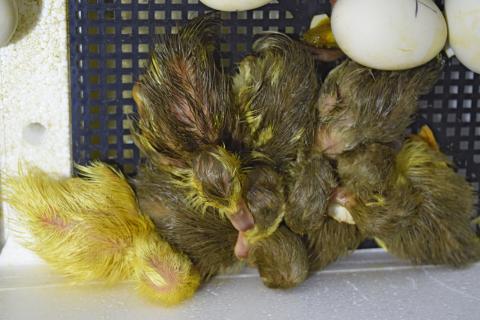Prices for eggs and chicken meat will increase, but you probably don’t have to worry about the disease hopping to humans. Dr. Lowe explains in The Round Barn podcast that the flu receptors in humans (and pigs) are in different places than in birds, meaning that it’s possible but challenging and unlikely for the disease to infect humans.
Instead, the disease is currently devastating commercial chicken production plants. Because of surveillance, scientists and producers knew this was coming. Samples taken from water and waterfowl earlier this year indicated a spike in bird flu. So, producers were warned this was coming, and did their best to lessen the impact; but the impact will still be significant.
The flu is spread from ducks to chickens via the fecal route. It’s unknown how duck feces enter into chicken plants with current biosecurity measures, but unfortunately, it does. When bird flu is detected in a chicken production plant, the entire flock is then euthanized. This is going to create a sharp decrease in supply for eggs and chicken meat, which will be reflected in food prices – on top of the grain shortages that were already spiking food prices because of the Russo-Ukrainian war (learn more about wheat prices and the war in March’s episode).
There is no bird vaccine for avian influenza because a vaccine would make the disease endemic, and producers are absolutely not willing to have bird flu be endemic (estimates for mortality rate in humans are about 50% – as in, one in two people infected die). Instead, producers pursue a complete eradication strategy – culling entire herds at the first detection.
If you want to learn more about the science behind influenza viruses, how scientists collect surveillance data on the disease, and why food animal veterinarians are more like pediatricians than general practitioners, listen to this week’s episode of The Round Barn.
